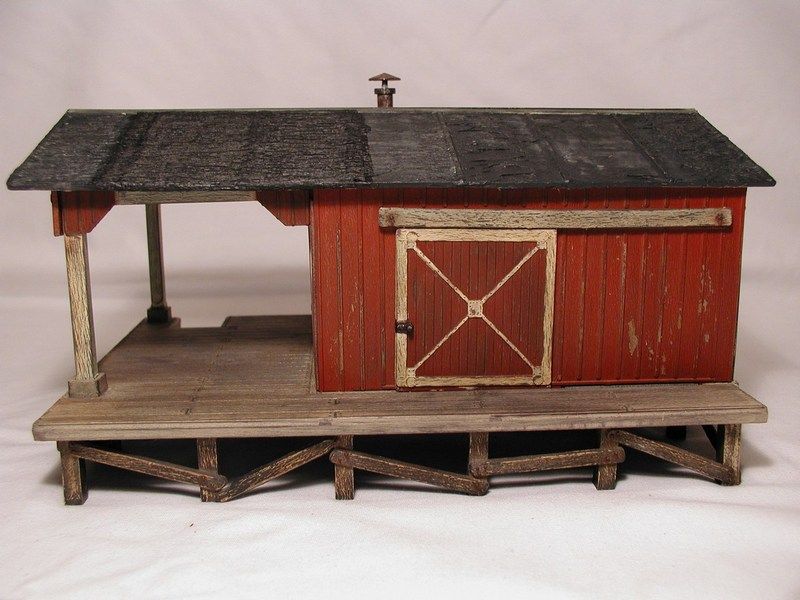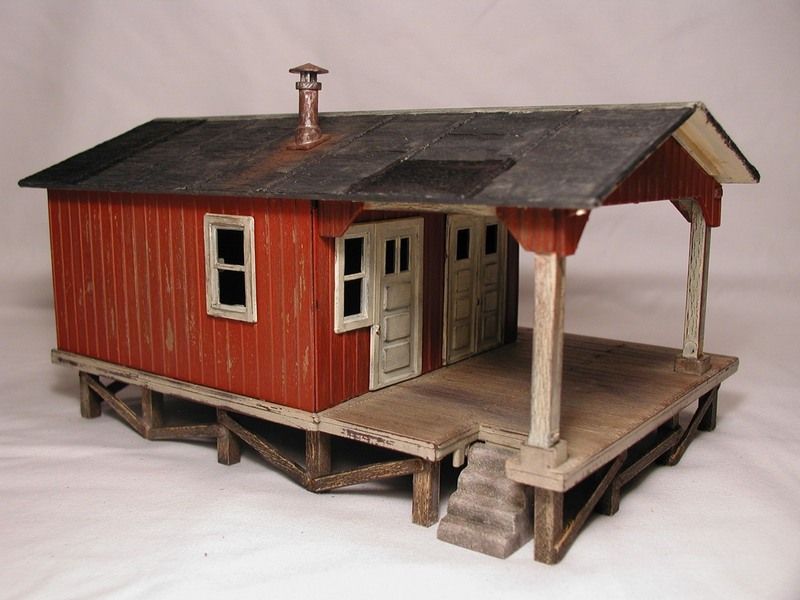I just wanted to share what I had done with this Lionel Freight Platform that had been languishing in my basement for a number of years. Most of the parts came molded in dark brown except for the windows, doors, and roof sections, which were gray. That's not a very exciting color palate but with some paint, weathering powder, sandpaper, and paper streamers I found that this bland building had some real potential.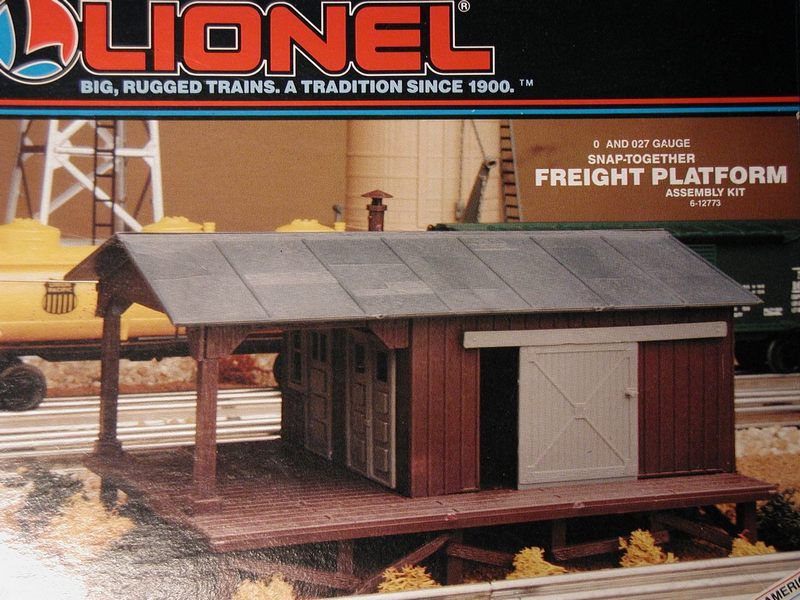
Base and Support Posts
The kit came with a base which had some good nail and wood grain details molded in. I started by giving it a coat of wood-colored paint. I happened to have a can of Rustoleum Gloss Sand which gave it the look of newer wood. Normally, it would be better to use a flat paint but I had the gloss on hand and since I'm not the world's most patient person, a trip to the hardware store was out of the question.
Out of the box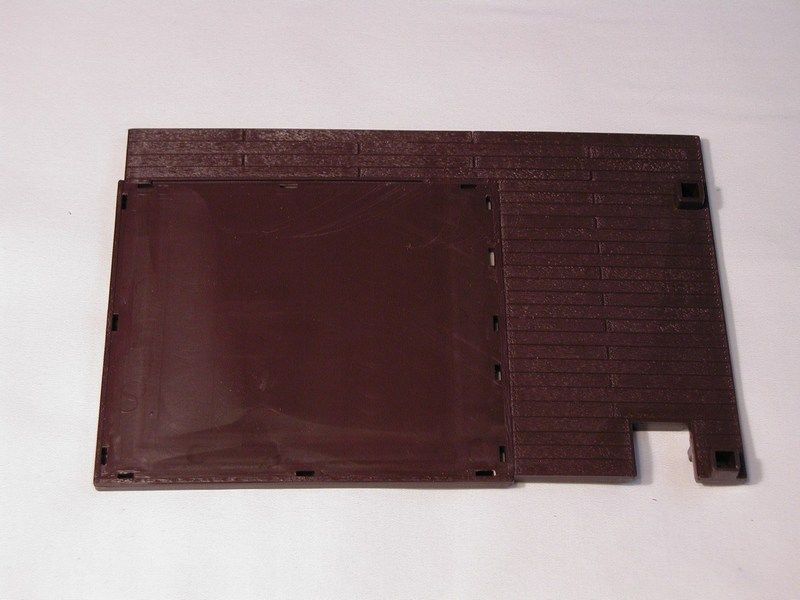
After a coat of Gloss Sand: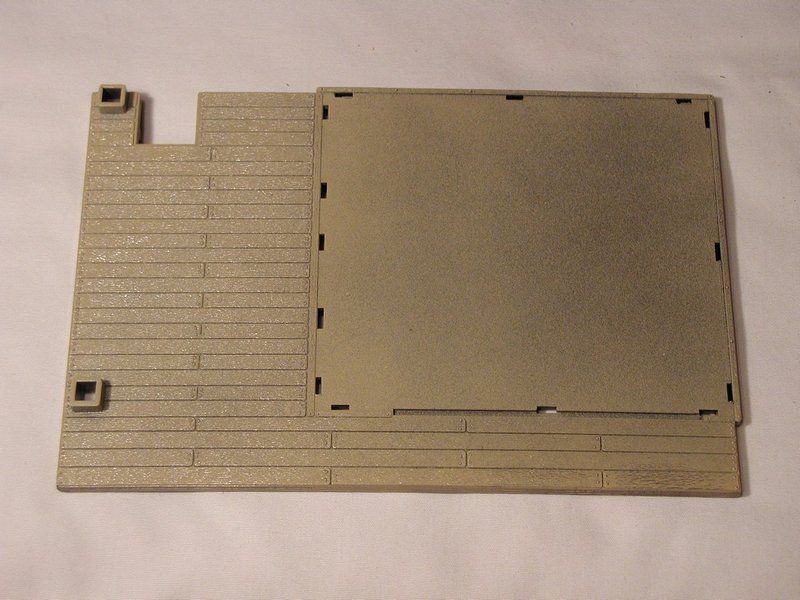
Once that coat of paint was dry I took 320 grit sandpaper and, using gentle pressure, wore away some of the topcoat to reveal the brown underneath. I paid particular attention to the areas in front of doors. They received extra sanding to simulate the effects of foot and cargo traffic. Once that was done, Dullcote was applied and then dirty brown weathering powder.
Finished base: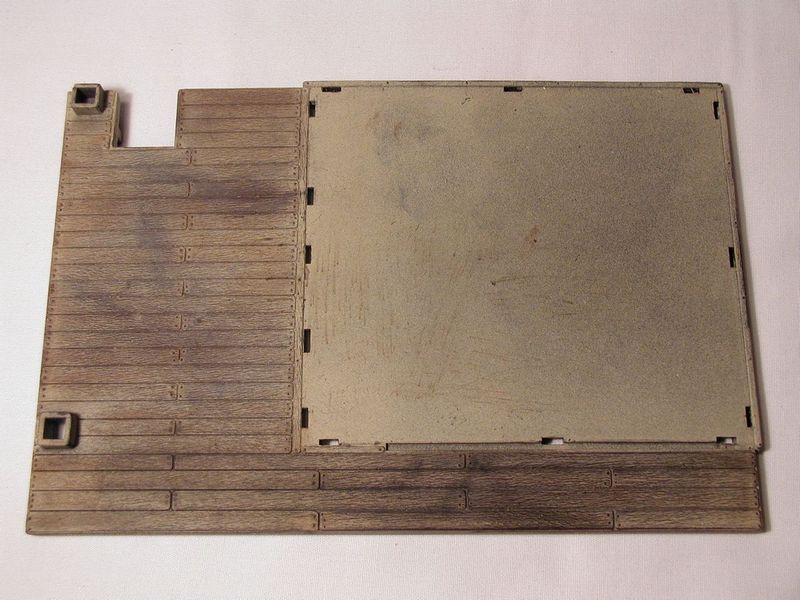
The process for the support posts and beams was similar, but I had to use a different combination of paints so they didn�?t end up looking the same as the base. Again, I started with a coat of Rustoleum Gloss Sand, allowed it to dry, and then applied a coat of Rustoleum Camouflage Tan. Finally, a coat of Rustoleum Camouflage Earth Brown was applied. When all of the paint was dry, I took take another piece of 320 grit sandpaper to the faces of the boards and sanded some of it away. The edges were worked on until the first coat of the sand color was visible. When finished, the posts and cross pieces were dark and had the look of rough, cracked wood. You'll also notice that every crosspiece has a bolt head molded into each end. Using a model brush, a small dab of raw umber acrylic paint was placed onto the head. I took the brush, pushed down gently, and swirled it around two or three times. That smeared the paint around the head and gave the impression of discoloration of the wood. In doing this you wear all the paint off the bolt head, so I went back and applied just a small dab of paint to highlight it.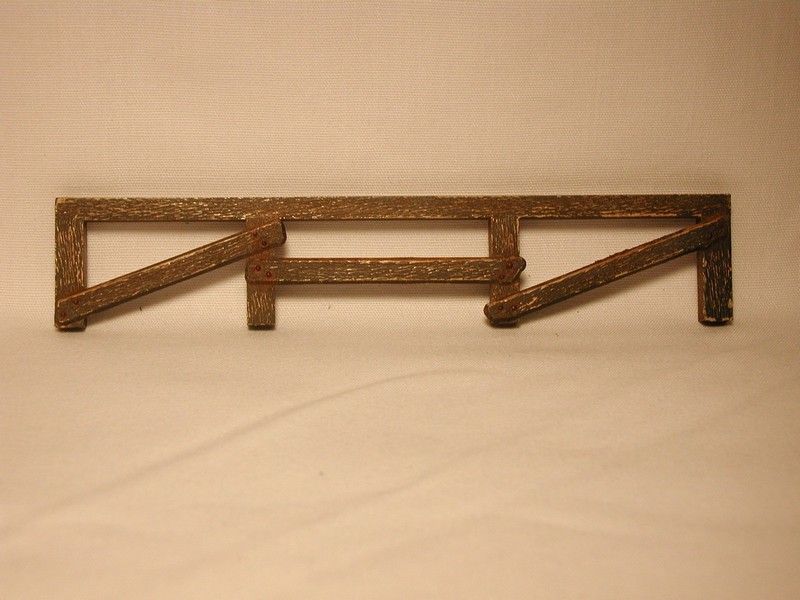
Steps
The first thing I did with the steps was gently round off all of the edges with a small file. To simulate the look of concrete, I used a light coat of Rustoleum Desert Bisque Mulitextured spray paint. As the name implies, this imparts a slightly rough texture to the plastic. After that was dry, a light tan-colored paint was dry brushed on random spots. In my case, I used some latex paint left over from a house project. As a final step, I applied a few streaks of black weathering powder.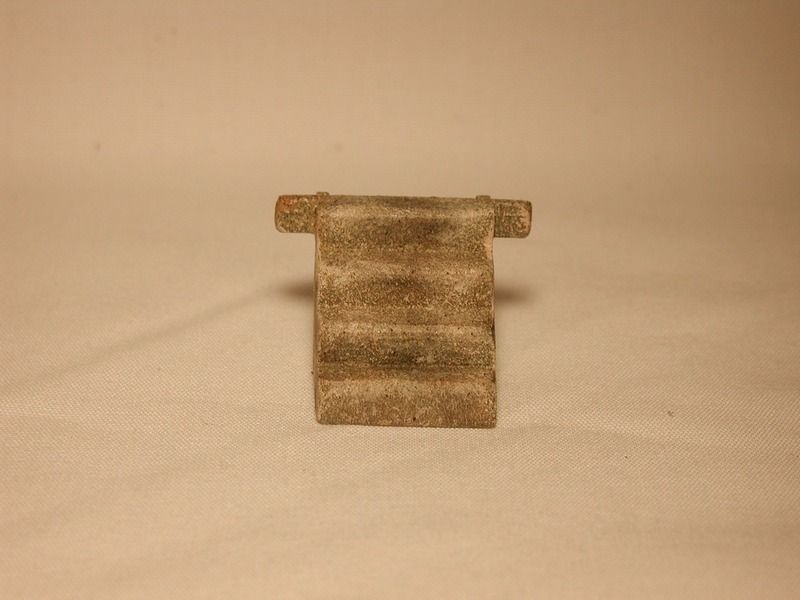
Walls, Sliding Door, and Door Guide
I left the walls on the sprues and gave them an initial coat of flat gray.
After that was completely dry, rubber cement in small amounts was placed on a few random spots.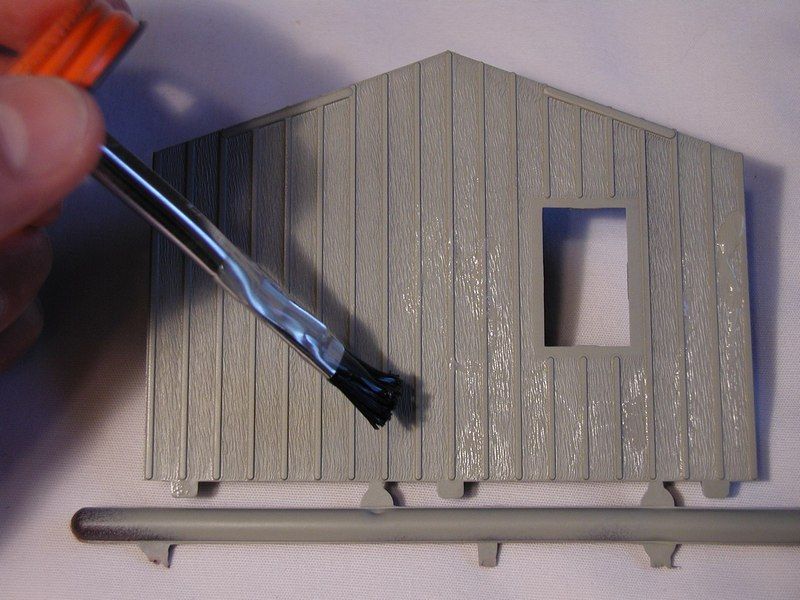
After the glue set up, I went ahead and applied a light coat of the main color which I had decided would be maroon. Once everything sets up, the rubber cement can be rubbed off to reveal the gray underneath. The next steps were to apply Dullcote and then finish up with weathering powders. Since I had chosen maroon for the top coat I found that a rusty red powder rubbed in with an old rag gave it a faded look. Applying a dirty brown powder over the gray spots did a wonderful job of simulating bare, weathered wood. I followed the same procedure for the large sliding door, then took a small modeler's brush and carefully painted on the trim color around the edges and on the cross bracing.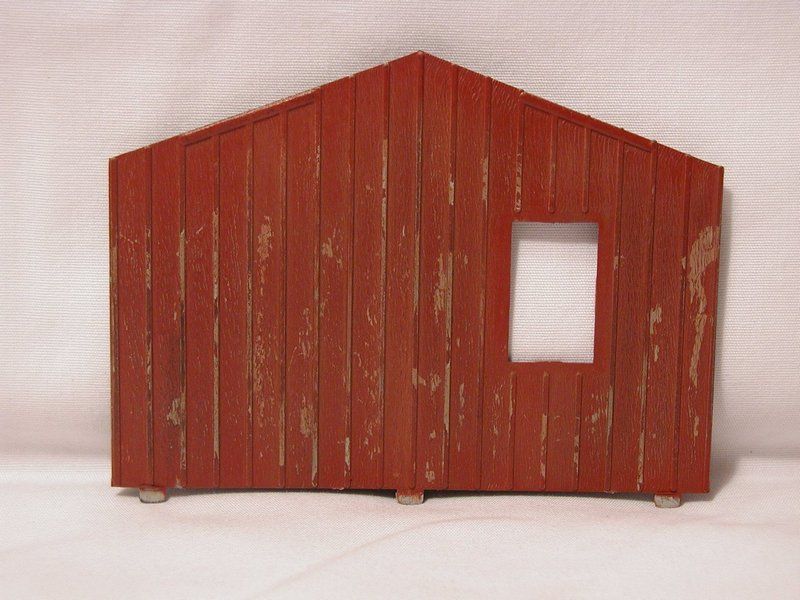
The door guide was given an initial coat of flat gray and then a final coat of trim color. After the paint was all dry, I took a small piece of sandpaper and folded it in half. Using the folded edge I made short, quick scrapes all over the guide. The goal was to achieve the look of cracked and peeling paint, so I scraped until I had achieved the desired effect. The guide also has a bolt head molded into each end, so I used the same procedures as noted previously for the crosspieces in the base.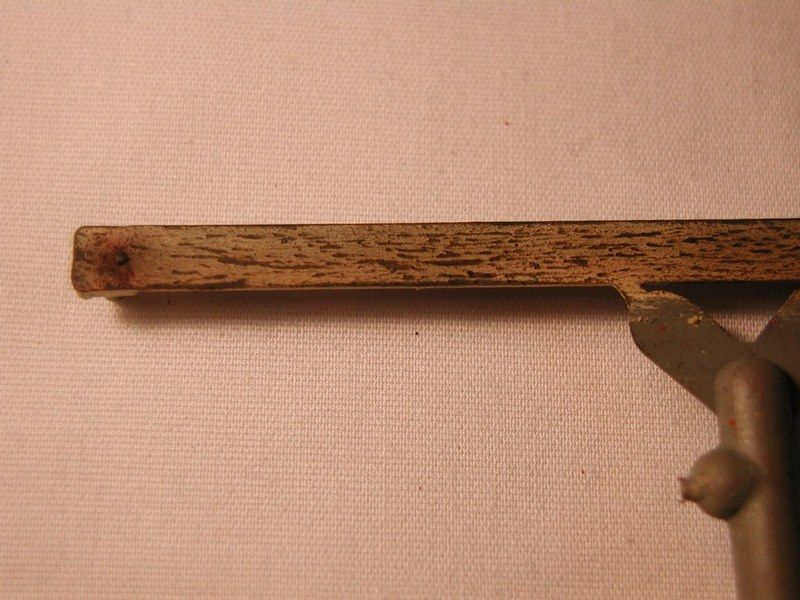
Doors and Windows
The doors and windows were probably the easiest to do. I started off by painting these with a dark gray primer. When applying the topcoat, I put it on sparingly and brushed it out so it was thin. I wanted some of the gray underneath to show through. When everything was dry, the doors and windows had a faded and slightly dirty look. As a final step, I took a fine-tipped brush and applied a small amount of flat black to the doorknobs.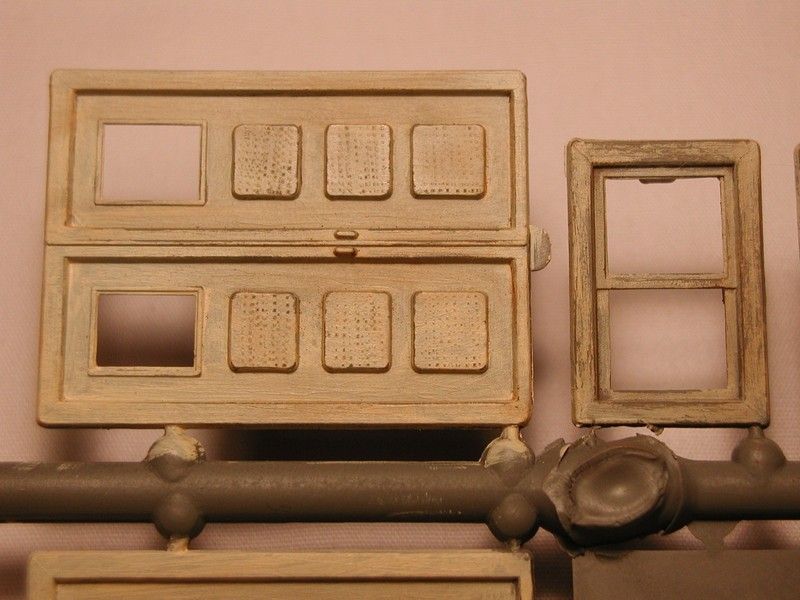
Roof
(I need to mention that the roof technique was not my idea. I got the inspiration from Jeff Wilson's book "Basic Structure Modeling for Model Railroaders". )
If you've been wondering about the paper streamers I mentioned in the introduction, well this is where you curiosity will be satisfied! The roof had some detail molded in, but I opted to give it the look of a tar roof. It was in two parts, each with seven sections. I happened to have a roll of white paper streamer (the wrinkly, stretchy type) left over, I think, from one of my son's birthday parties. I cut out fourteen pieces that were wider than each roof section. Going section by section, I applied Polly-Scale Grimy Black paint, laid a pre-cut section of streamer over it and pushed it down into the paint.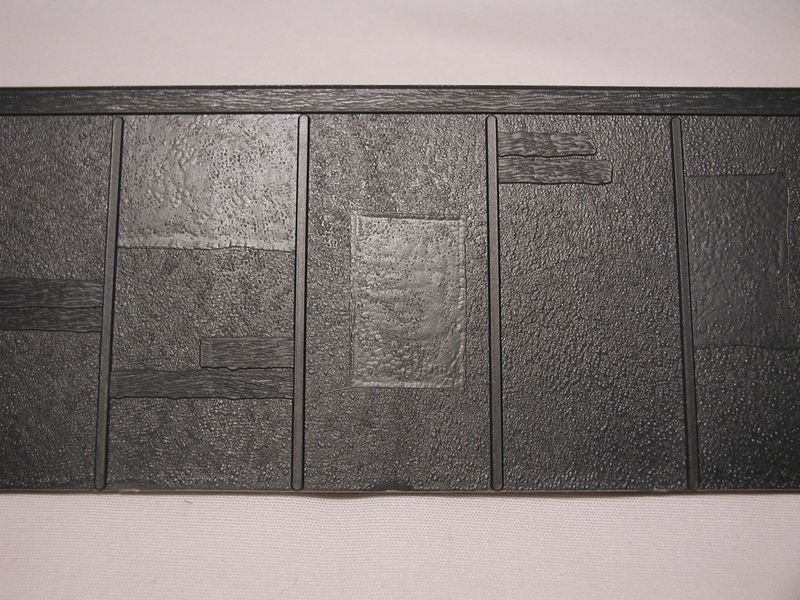

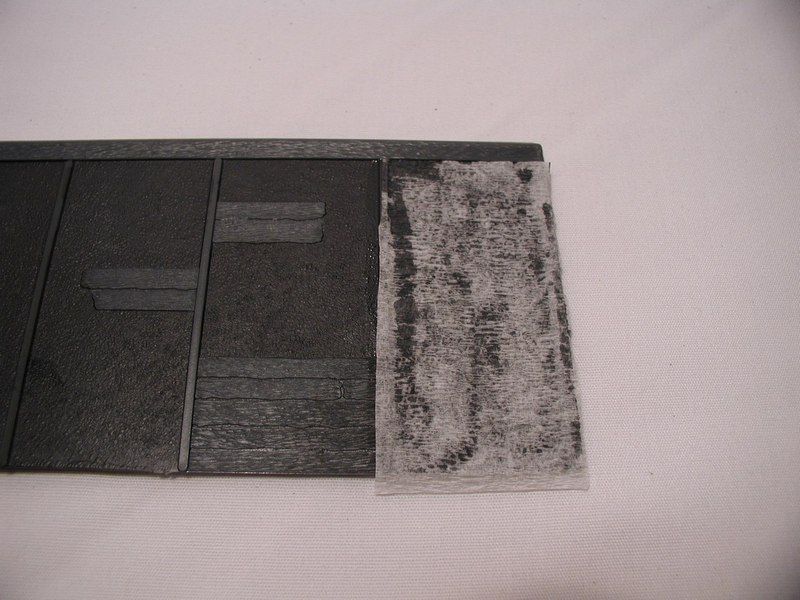
When applying the streamer pieces, I made sure the top did not cover the board that is molded in along the very top of the roof. I then completely coated the streamer with paint. I kept repeating this process as I moved along the roof, being sure to overlap the pieces a little. On a couple of random sections, I used a flat black color. It is darker than the grimy black and simulated recent repairs.
Once all of the streamer pieces were on and the paint was dry, I painted the board at the top in trim color. Since the roof was already molded in gray, I took my trusty 320 grit sandpaper and wore away some of the color. A moderate application of black weathering powder gave it a worn look.
Roof Support Posts
As with the doors and windows, the starting point was a coat of gray primer and then I masked off the small panel sections on the corners and ends. The posts were painted with the trim color and while they were tacky, I wiped them gently with a rag. They had a raised grain and the rag took the paint off of it and automatically provided a weathered effect. After the paint dried, I masked off the posts and painted the panels maroon. Since they are protected by the roof overhang, I felt that they should receive very little weathering. A light application of weathering powder proved sufficient.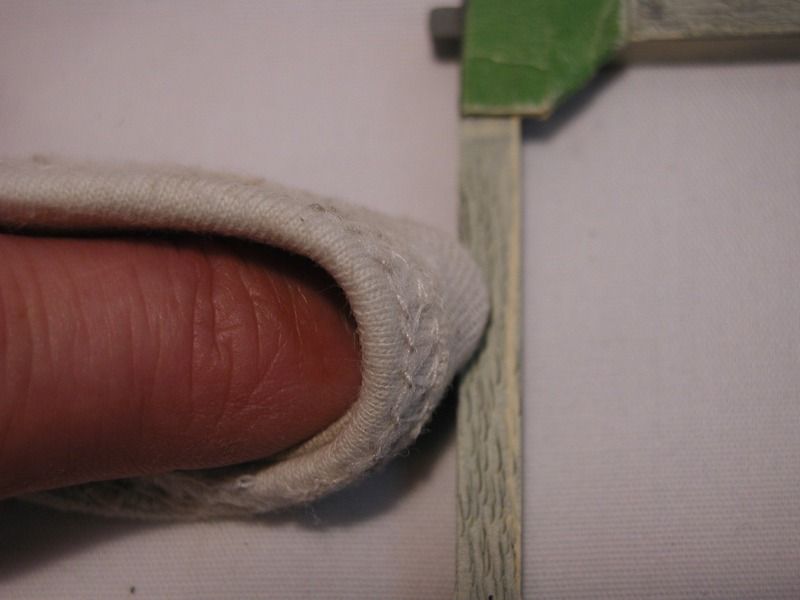
Smokestack
The smokestack was given an initial coat of red primer and allowed to dry. After that, silver was applied. While it was still tacky, I took an old rag, wrapped it around my finger, and lightly dabbed all around the smokestack. This removed some of the silver color and revealed the red primer underneath, simulating rust spots. The look can be enhanced with the application of either rusty red or rusty brown weathering powder. After I attached the stack to the roof, I took a brush and applied some weathering powder around the base and then a streak running toward the roof edge.
After the red primer: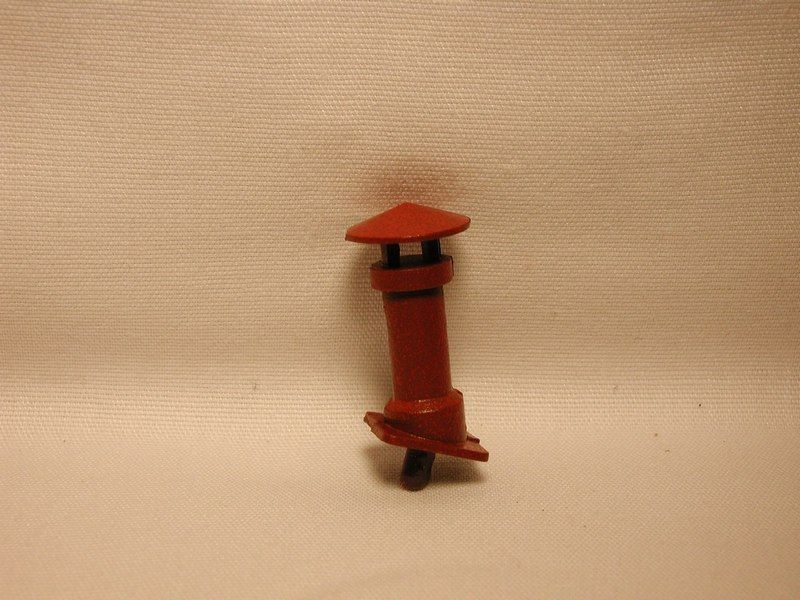
Dabbing off some silver paint:
Finished product: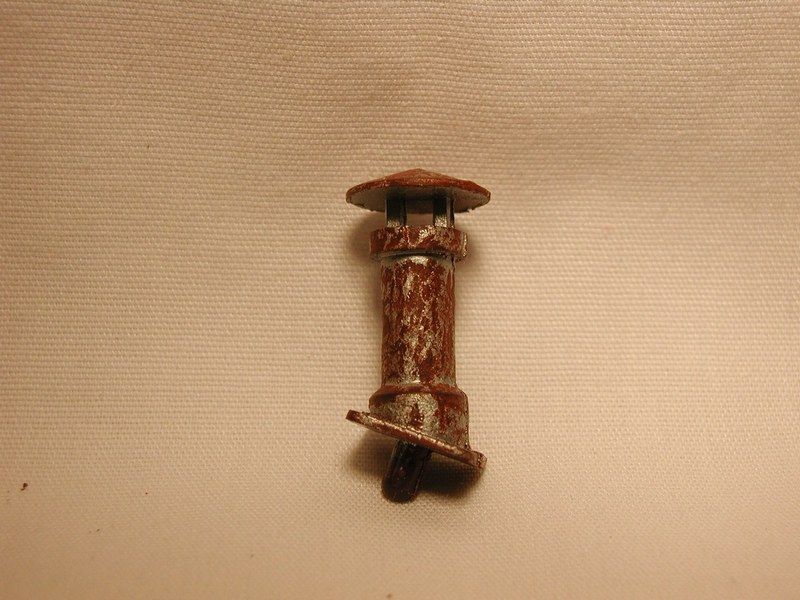
Applying rust streaks to the roof: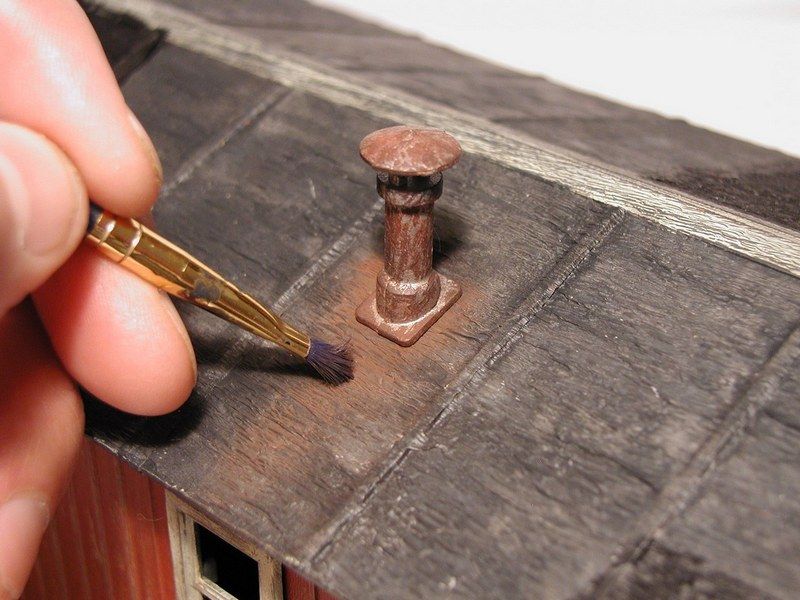
A few pictures of the whole thing once it was finished.